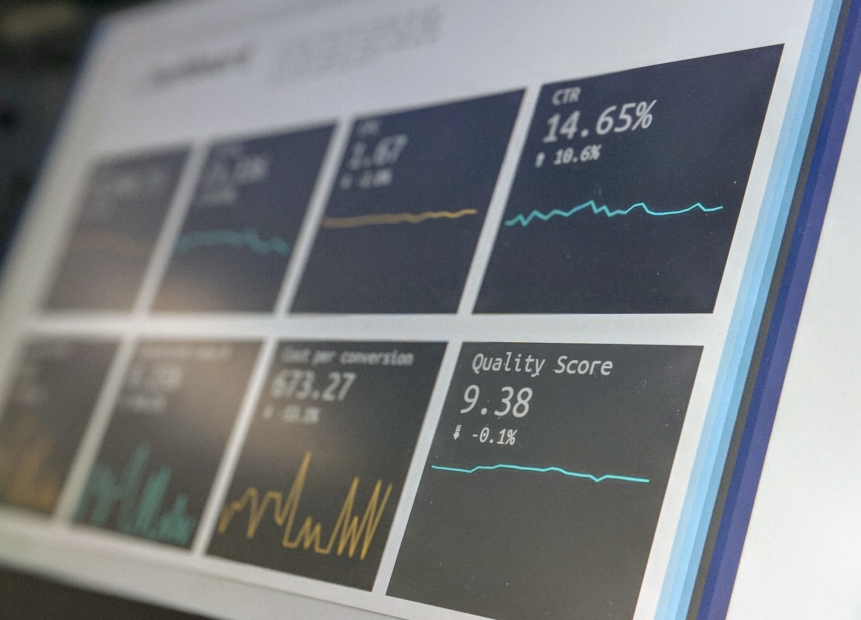The success of an investment results from an interplay of favorable circumstances and an ideal strategy. Whether active trading or passive investment in index funds – every portfolio is individual and must be managed accordingly. Even with a passive investment, investors must become active so that the chosen investment strategy lasts over the long term. In addition to a review of the portfolio, rebalancing may be necessary.
What this rebalancing is about, what advantages it brings and how it works, you will learn in the following article.
Contents
- 1 The most important facts in 30 seconds
- 2 Portfolio Rebalancing: What is it?
- 3 Reasons and advantages of portfolio rebalancing
- 4 How does portfolio rebalancing work?
- 5 Example of rebalancing
- 6 What criteria should be used for rebalancing?
- 7 When and how often does portfolio rebalancing make sense?
- 8 What should one pay attention to when rebalancing?
The most important facts in 30 seconds
- When investing, the investment strategy is one of the most important steps.
- Even with passive investments in ETFs, investors should become active from time to time with so-called rebalancing.
- Rebalancing refers to a rebalancing of the portfolio so that the original weighting of the investments is restored.
- Through rebalancing, an investment strategy once selected is followed over the long term.
- Attention must be paid to the costs incurred during rebalancing.
Portfolio Rebalancing: What is it?
A securities portfolio should be diversified to the extent possible and consist of several asset classes. It can consist of stocks, bonds or other investments and usually reflects the personal risk appetite as well as the expected return. With a high share of equities, investors must generally expect higher price fluctuations and thus be more willing to take risks. A more conservative portfolio, on the other hand, consists of bonds with a very good rating and index funds, for example.
Due to the different development of the investment markets, the individual values can also develop unequally. This results in an imbalance between the various asset classes. Depending on how pronounced the individual price changes are, a conservative portfolio can also quickly become an offensive portfolio.
Rebalancing is about restoring the original weighting in a portfolio by buying and selling individual assets. This also brings the relationship between risk and return back into balance. Rebalancing is therefore often used as a control tool so that the risk taken does not increase uncontrollably in the long term. In rebalancing, upper and lower bandwidths are therefore defined in percent for each asset class. In principle, there are many reasons for regularly rebalancing a portfolio.
Reasons and advantages of portfolio rebalancing
Basically, there are several reasons which speak for portfolio rebalancing. By defining upper and lower ranges, emotional investment decisions are largely eliminated. This investment discipline can counteract the psychological pitfalls of investing and, for example, suppress fear selling. As a rule, rule-based rebalancing can achieve higher returns for the same level of risk than a buy-and-hold strategy. In addition to investment discipline, the particular advantages of rebalancing are risk control and countercyclical trading signals.
Risk control is the main reason for rebalancing the portfolio. In the stock market, prices rise and fall daily. Depending on the asset class, the economic situation and other factors, values can also change in the medium or long term. This is also accompanied by a change in the respective portfolio. Phases can therefore occur in which the proportion of risky investments increases significantly. This is the case, for example, when certain company shares increase in value or ETFs decrease in value.
With portfolio rebalancing, you can optimally control and manage your risk. In a simple way, the distribution of asset classes can be corrected again by individual purchases or sales. If you refrain from adjusting your portfolio, you may unknowingly or unintentionally run a higher risk of capital loss.
Another advantage lies in the countercyclical trading signals sent by portfolio rebalancing. This means that shares in risky forms of investment, such as equities, are sold in good stock market times and bought at lower market prices. This increases the chances of returns in the long term. However, rebalancing should not be confused with market timing. According to prevailing opinion, there is no methodology to reliably determine the right entry or exit point. For this reason, regular rebalancing should be done according to a fixed rule and executed automatically.
Read also:
- Tips for private financial planning
- Options for long-term investments
- The 3-pillar principle for retirement planning

How does portfolio rebalancing work?
Each rebalancing is as individual as the underlying portfolio. Depending on current market developments in the overall economy and the specifics of individual sectors or companies, fluctuations in value can vary greatly. Accordingly, the individual asset classes and portfolios must be considered in a differentiated manner. The time period in which the individual values shift can also be very different.
However, rebalancing can not only happen between asset classes such as equities or bonds. In value-based rebalancing, each individual security is assigned a certain weighting with a defined tolerance range. As soon as the performance of the security falls below or exceeds this tolerance, the rebalancing takes effect.
Example of rebalancing
For our example, we have chosen a simple portfolio with a balanced investment strategy. This has a structure of 50 percent equities and 50 percent bonds with a very good rating. The investment amount is 100,000 Swiss francs and thus 50,000 Swiss francs for each asset class. In our exemplary portfolio, the equities have gained about eight percent. The share of bonds has gained about four percent during this period. As a result, the distribution of the portfolio has shifted from the original 50:50 to 52:48. At this point, therefore, 52,000 francs are now invested in equities and only 48,000 francs in bonds.
As a rule, equities are more volatile than bonds. Bonds, on the other hand, usually react faster and more directly to interest rate changes on the market. Due to the increased share of equities, the portfolio has a higher risk profile and thus a higher loss potential than desired. The balance can be restored by selectively shifting the values in the portfolio. By selling shares, buying bonds or a combination of both, the distribution is adjusted back to 50:50.

What criteria should be used for rebalancing?
Figuring out how often and when to rebalance a portfolio is not always easy. On the one hand, too frequent rebalancing should be avoided. On the other hand, rebalancing needs to be done after a certain period of time to realign and adjust the risk in a portfolio.
In order to be able to manage risk effectively, a distinction must first be made between the individual risks. In a portfolio, there are country risks, market price risks, default risks and other risks. This means that the overall risk can be managed not only through the selection of investment groups, such as equities or bonds, but also through the choice of individual products. In this way, high-risk countries or sectors can be specifically avoided.
Basically, there are three different strategies according to which rebalancing can take place: time-based rebalancing, value-based rebalancing and cash flow-based rebalancing. These strategies exist under different names and in different variations.
The most common and comparatively simplest is time-based or calendar-based rebalancing. Here, a rebalancing is carried out in a cycle of 12 or 24 months and at a fixed point in time through purchases and sales. This usually does not take into account how the market is behaving at that time and how good the stock market month is.
In value-based rebalancing, a portfolio is rebalanced whenever the proportion of stocks, bonds or another asset class reaches a certain threshold. Until this point, the investor usually remains idle. Exceeding the defined threshold then automatically triggers a reallocation. With this strategy, it is advisable to set certain percentages in advance depending on the original value. If a certain portfolio component is to comprise 40 percent and the threshold value is 8 percent, the component may move between 32 percent and 48 percent without triggering a rebalancing. Only when this threshold is reached is the portfolio rebalanced.
Most portfolios are managed dynamically, which benefits cash flow-based rebalancing. The cash flows from inflows and outflows can be used to perform ongoing rebalancing free of charge and, in the case of sales, in a tax-neutral manner. This method reduces the disadvantages in terms of costs incurred. For this reason, the strategy is very popular. However, it is comparatively costly and requires time and know-how.
When and how often does portfolio rebalancing make sense?
As with buying and selling assets, investors are always asking themselves the question of the optimal time for rebalancing. In addition, it is often essential at which intervals or according to which situations a rebalancing of the portfolio should be carried out.
A very simple rule of thumb is that the weighting in a portfolio should be reviewed and adjusted at least annually. This can be done at a certain point in a year, for example. Alternatively, the adjustment can be decided depending on the market situation or the state of the stock markets.
Basically, the shorter the chosen interval, the more expensive rebalancing will be. Large time intervals, on the other hand, have the disadvantage that the portfolio can sometimes move very far away from the initial situation.
In addition to the time-dependent interval, there is also the value-dependent interval. Here, the portfolio is always rebalanced when the proportion of stocks, bonds or another asset class has reached a certain threshold. With this interval, it can be helpful to set certain percentages in advance depending on the original value.
In the case of exceptional market situations, it may also be necessary to reallocate the portfolio outside of defined intervals. Particularly low or high prices may make it advisable to buy or sell securities. When rebalancing, investors generally distance themselves from pure speculative transactions. Rebalancing a portfolio should be a rule-based, forecast-free and disciplined process in order to achieve the highest possible return while maintaining the same level of risk.

What should one pay attention to when rebalancing?
When creating a portfolio, investors should first think about their personal risk profile. This forms the basis for buying or selling decisions and determines the composition of the various assets.
Rebalancing is an active measure in an otherwise passive investment. However, this rebalancing of assets can also be associated with additional costs. For this reason, it should be calculated whether rebalancing is carried out at longer or shorter intervals. Costs incurred should always be included in the overall consideration of the return in order to obtain a realistic overall picture. Especially for smaller amounts, the costs for rebalancing have a greater impact.
In principle, transaction fees are incurred when trading securities. In the case of fund rebalancing, issue surcharges are also added. Such costs must always be in proportion to the desired return when rebalancing. If the costs are too high, it may be advisable to refrain from rebalancing. A rule of thumb says that rebalancing does not pay off if the costs amount to more than one percent of the investment amount.
Sources
- [1] gerd-kommer.de
- [2] justetf.com
- [3] vermoegenszentrum.ch


